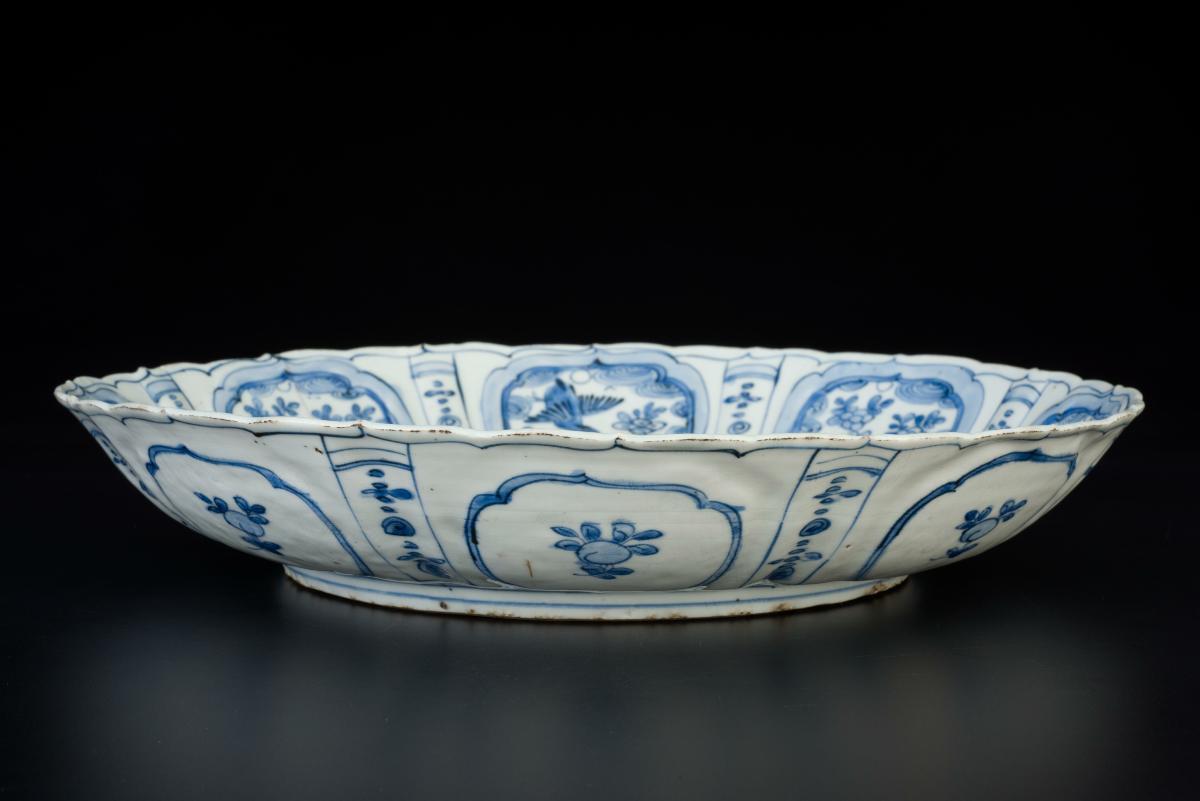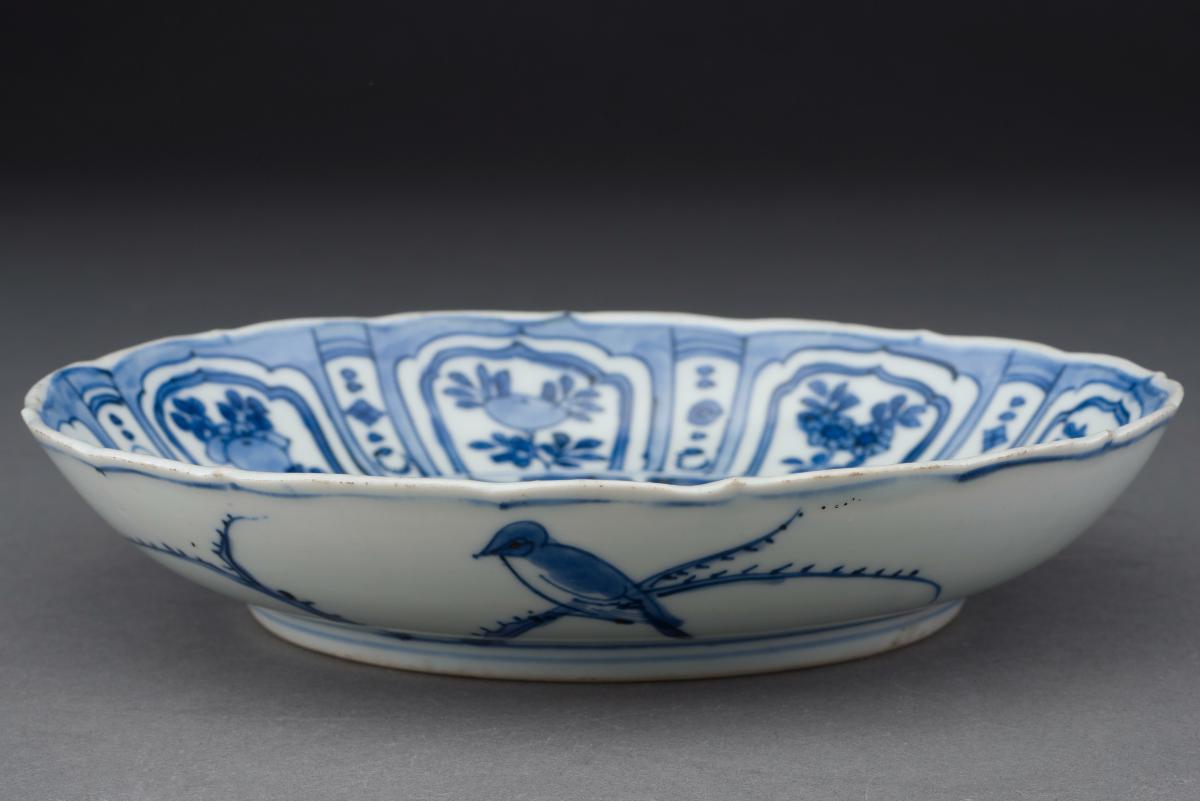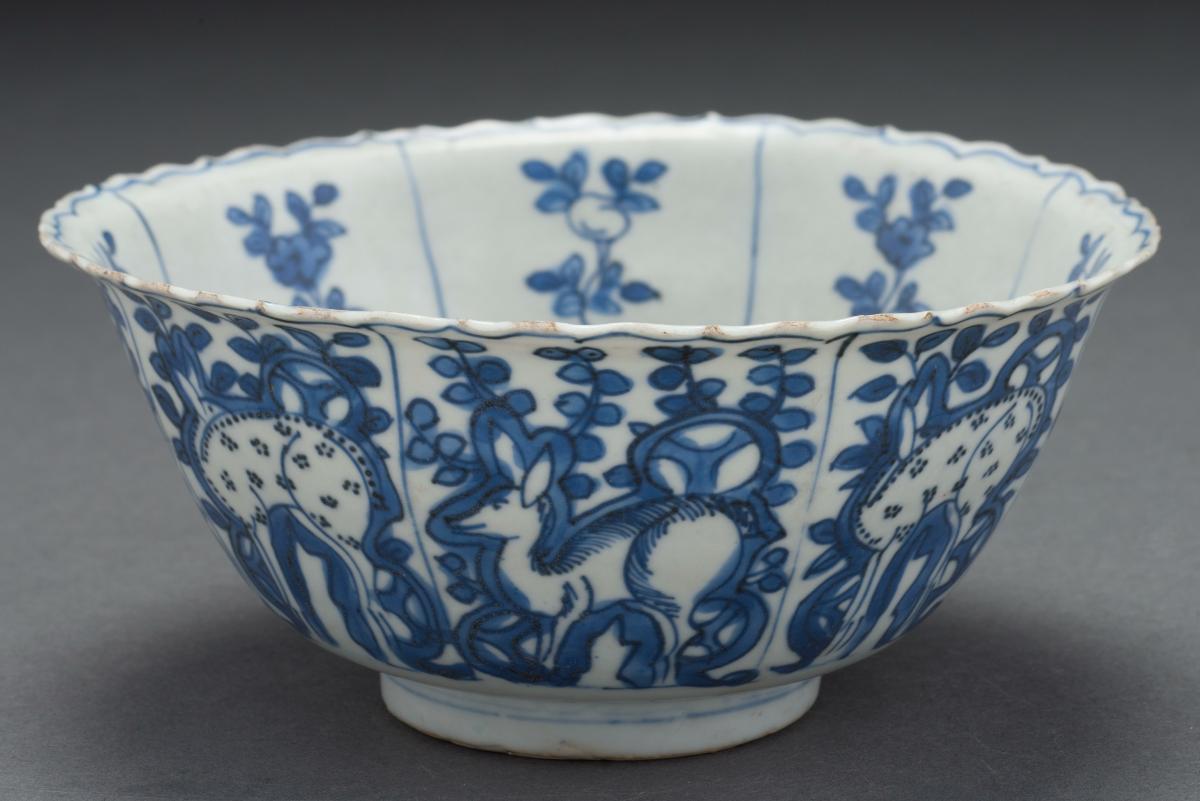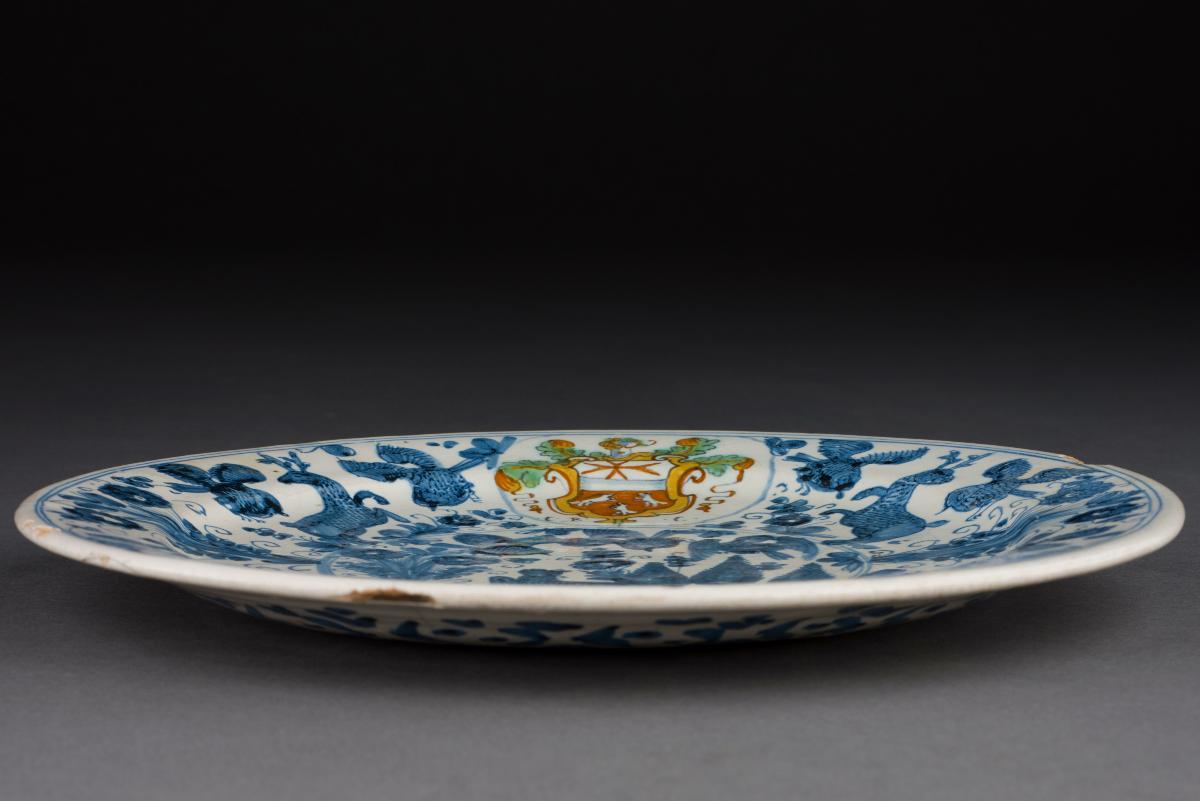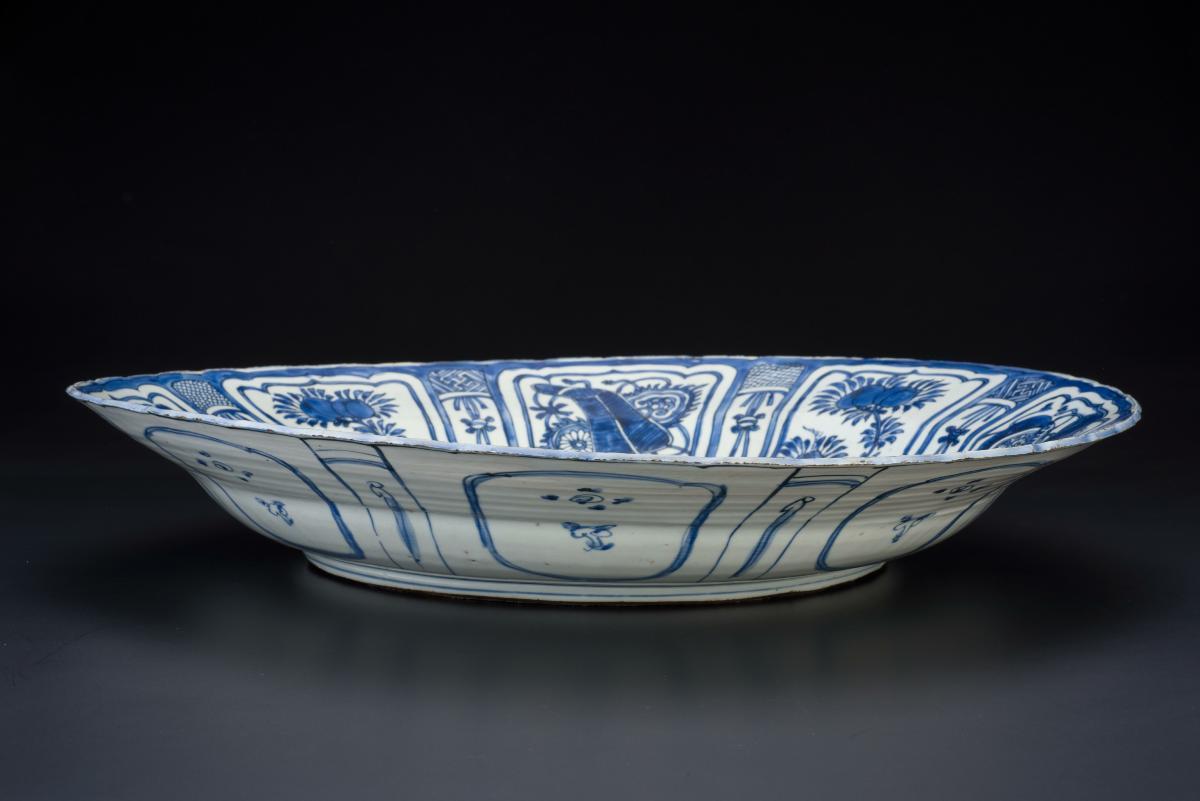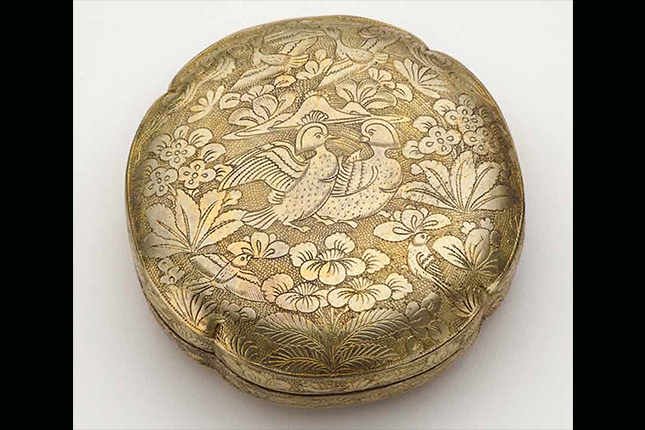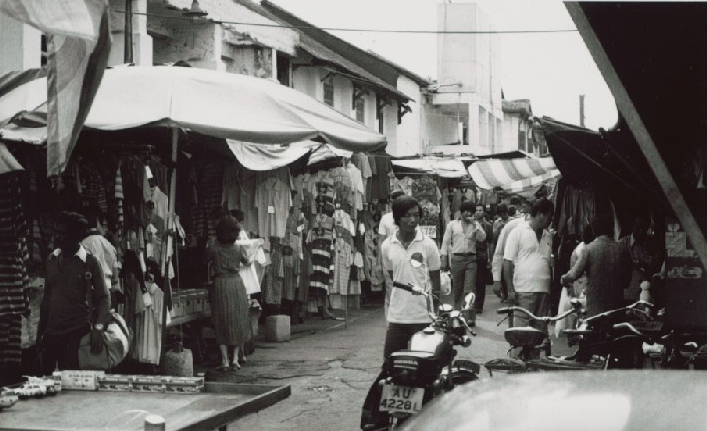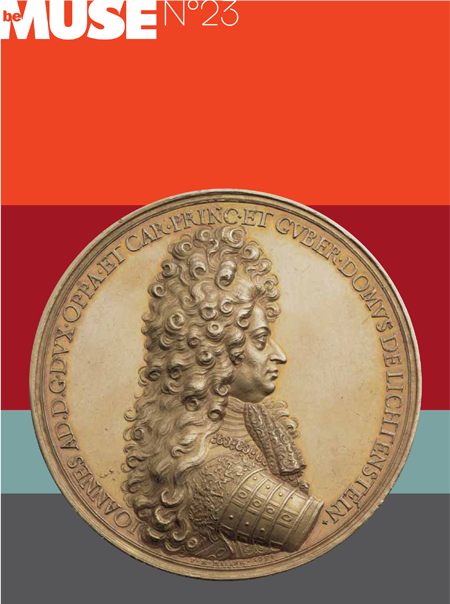This type of dish, known as 'Kraak' ware, was mostly decorated in blue and white with motifs divided into panels. The large dish featured here has a central popular motif of deer and pine trees, both symbols of longevity within a diaper and wave border. The designs on the foliated rim consist of panels containing fruit alternating with geometric motifs in between ogival cavettos containing flowers and butterflies.Large dishes with striking patterns such as this example served as conversation pieces in affluent European homes of the 17th century, where they were prominently displayed on the walls and mantelpieces or in special glass-fronted glasses. Kraak porcelain was extremely popular in Europe as it was versatile in combining Chinese and non-Chinese motifs and was available is different forms. Even when production in China decreased around the mid 17th century, its popularity never waned. Imitations continued to be made in Japan, England and other parts of the world.The term ‘Kraak’ was probably derived from the word ‘carrack’ referring to a type of Portuguese ship that brought porcelain to Europe. It could also be derived from the Dutch word ‘kraken’ which means ‘the ability to break easily’ or the term for a style of shelves used for porcelain display in Dutch homes.




